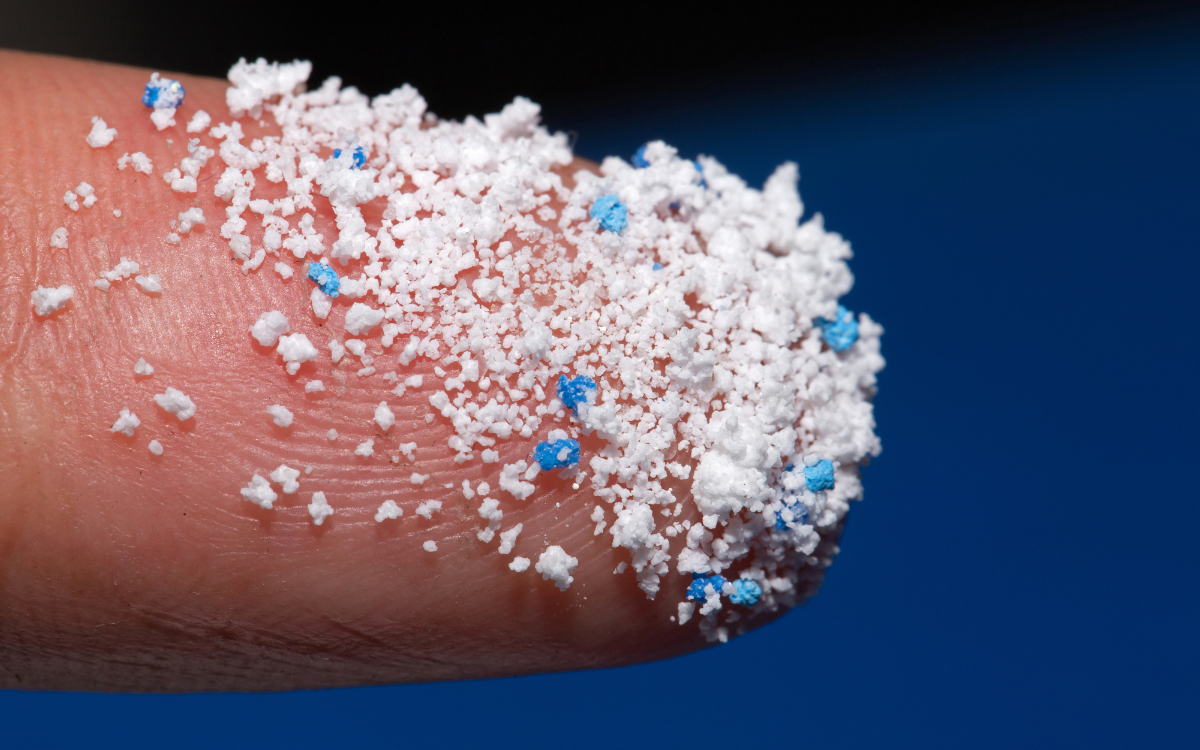Microplastics are found everywhere, even in everyday household items, so they can be consumed at any time without one realizing it. These tiny plastic particles have spread so much that it is difficult to track their origin and presence in our daily lives, as a 2019 study revealed that humans consume up to 52,000 microplastic particles per year.
Microplastic particles come from the breakdown of larger plastics, and their risks are linked to health issues such as heart attacks, infertility, and cancer. In fact, several studies suggest that microplastics could negatively impact sperm count.
Interest in this material has grown recently, as it has become one of the most popular searches on Google Trends in recent months, according to the German environmental organization CleanHub.
This growth was sparked by a study from the University of New Mexico that garnered global attention, leading many people to seek information on how microplastics enter the body and what can be done to reduce their presence. Despite these particles being everywhere, there are various sources that introduce them into homes, but there are also alternatives to avoid them, starting in the kitchen.
 microplastics
microplastics
5 Products to Avoid to Reduce Exposure to Microplastics and Their Alternatives
Microplastics can be present in different household items, and can even be ingested daily without realizing it, such as in:
1. Tea Bags
Indeed, many tea bags are made of polypropylene, a type of plastic that releases microplastics when in contact with hot water. According to a 2023 study from Dow University of Health Sciences in Karachi (Pakistan), a single cup of tea could contain up to 3.1 billion nanoplastics due to the tea bag.
These tea bags can release other harmful substances like fluoride compounds, arsenic, and heavy metals.
An effective way to prevent this is by using loose tea leaves, which are gaining popularity, along with other more sustainable options for making tea, such as using a cast iron or ceramic teapot, or a metal strainer. The use of cotton or organic linen tea bags is also recommended.
2. Paper Cups Are Not So Eco-Friendly
While these cups claim to be eco-friendly, they actually contribute to microplastic pollution due to their waterproof coating, usually made of polyethylene.
Even their recycling is more complex because of the need to separate the plastic layer from the paper. Additionally, using paper cups for hot drinks can release hazardous chemicals such as fluoride, chloride, and heavy metals, according to a 2021 study. Therefore, opting for a reusable stainless steel thermos not only reduces plastic use but also helps decrease exposure to microplastics.
3. Ice Cubes
Plastic ice cube trays can also contribute to pollution. Although there isn’t much information available, some data suggests that freezing plastics can release microplastics, a process similar to what happens with heated plastics.
An eco-friendly and healthy alternative is stainless steel ice cube trays, which not only look more appealing but also cool faster. Silicone ice cube trays are also considered a more sustainable option.
 microplastics
microplastics
4. Plastic Microwave Containers
Plastics labeled as “microwave-safe” can release significant amounts of microplastics into food when heated. According to a study from the University of Nebraska-Lincoln, almost 4 million microplastics can be found per square centimeter in plastic-wrapped baby foods for microwaving. In fact, they added that the observed particles even caused cellular damage in experiments with kidney cells.
5. Plastic Cutting Boards
A study from the American Chemical Society revealed that plastic cutting boards could expose people to up to 79.4 million polypropylene microplastics per year. This means that using these cutting boards can increase the amount of microplastics ending up in food.
A good way to replace them is with tempered glass cutting boards, an affordable, easy-to-clean option that is generally free of microplastics. Plastic-free cutting boards made of durable paper fibers can also be used.
Do you already know our YouTube channel? Subscribe now!

